Round and Round, and Up and Down – the pictures
This Post is a direct follow up to my previous post and provides some illustrations of the mid level ‘round and round’ (the continuous run), and the low level reversing loop. The pictures also feature Hornby R3191 which has recently taken up a lot of my time. It is getting to be quite an expensive engine – well if I had to charge for the time I have spent fettling it.
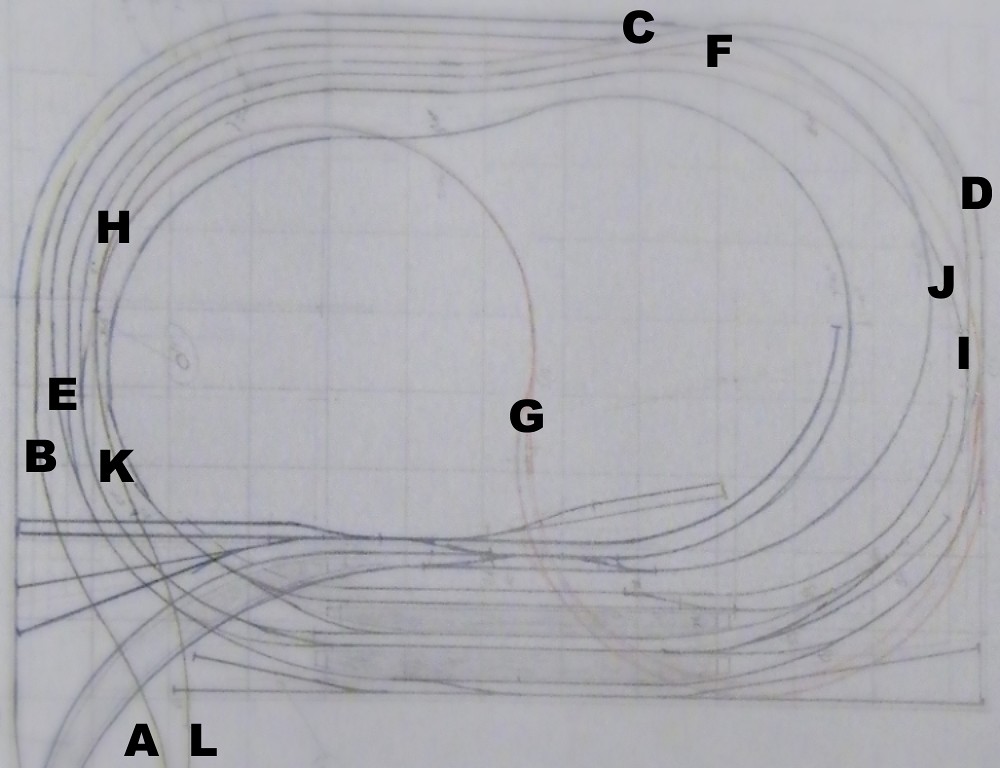
The Grand Plan – with photo locations
As planned and initially constructed the layout was to be ‘Out and Back’ with a Main Terminus, a double track mainline leading to ‘the Main Junction’ and then heading off to a return loop with storage sidings.
I have annotated the track plan above to show where the pictures were taken. The locations are labelled A to L in exactly the order that trains travel around the layout.
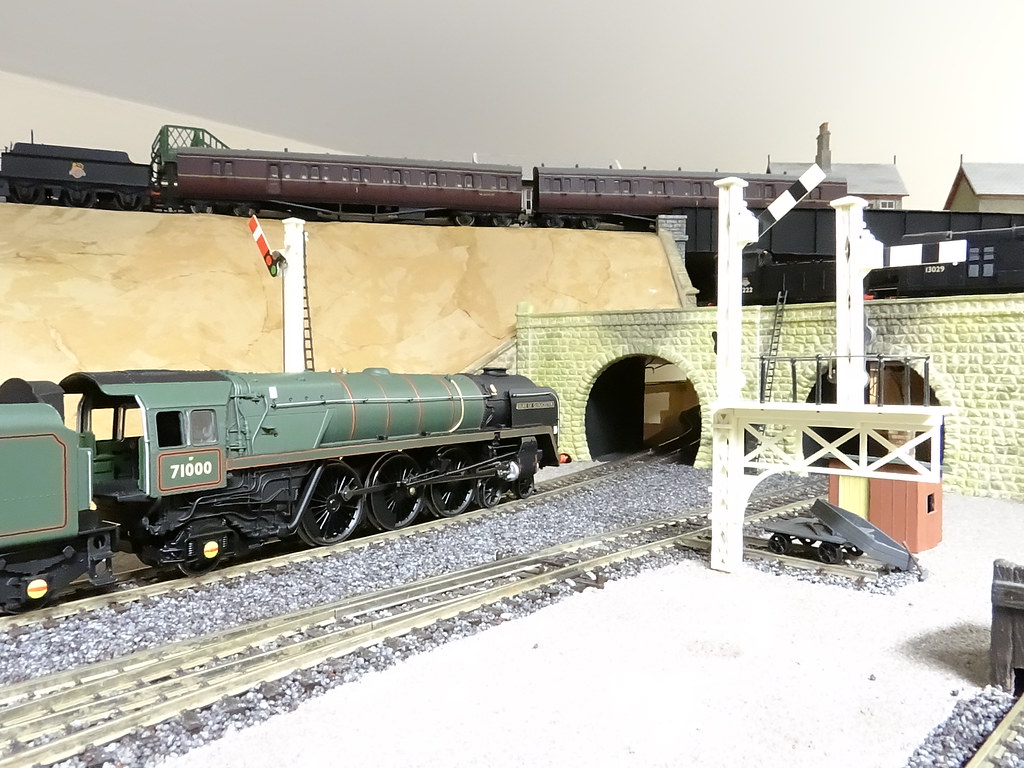
Location A Starting out – the double track main line from the Terminus Station
The double track main line from the Terminus Station starts out at the lowest level. This allows the ‘double track’ to pass beneath the Main Junction Station (and the Branch Junction Station at the higher level above).
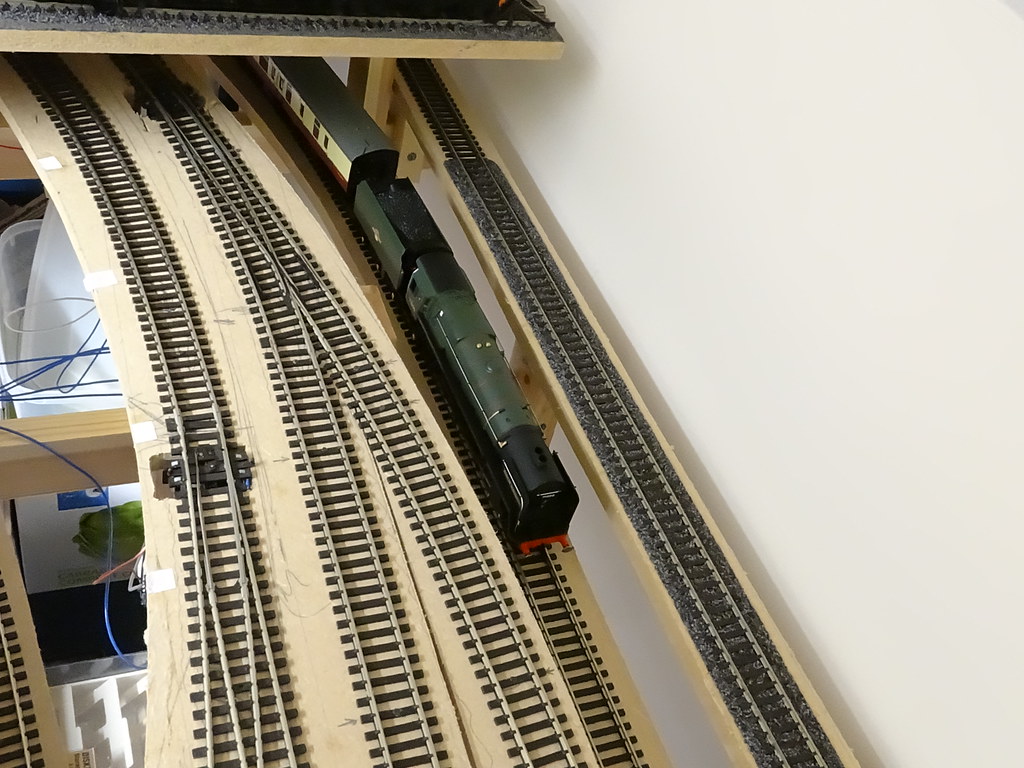
Location B – Starting the climb to the mid level
Passing beneath the Main Junction Station the double track splits into ‘up’ and ‘down’ lines that rise up to the mid level ‘round and round’ track. To try and make life easier for climbing trains, the ‘up’ line has a shallower gradient than the ‘down’ line.
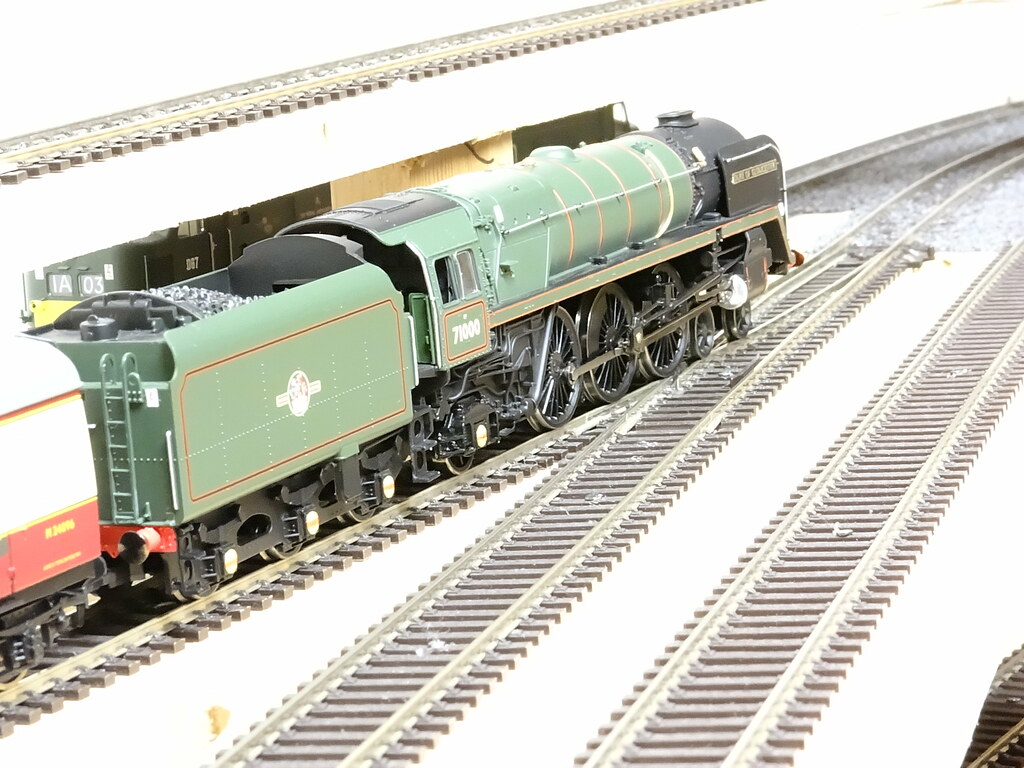
Location C – the ‘up’ Main Line from the Low Level joining the ‘round and round’
The ‘round and round’ was installed so that I could simply sit and watch trains go by. I would say that it is almost essential to have a continuous run for test purposes.
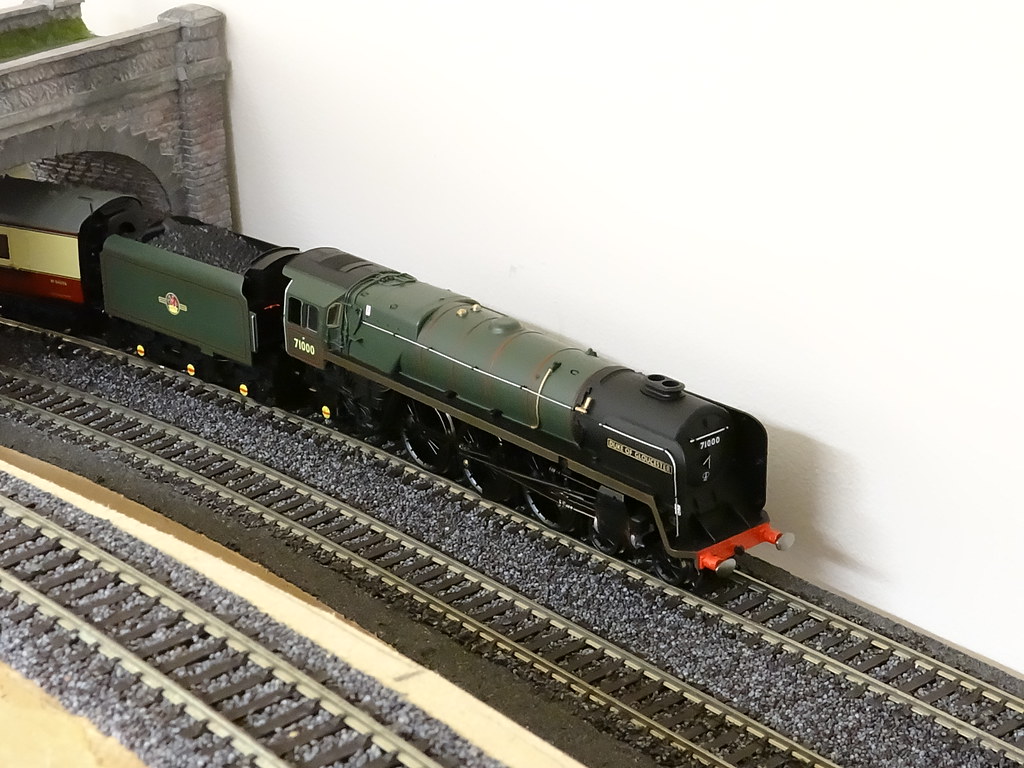
Location D – the ‘round and round’ (continuous run) approaching the Main Junction
At the planning stage the arrangements for the reversing loop were deemed to be behind the scenes and hence would not be ballasted. However as the layout has progressed it is apparent that some locations are suitable to be scenically developed and some ballasting has crept in.

A reminder - the Main Junction
The ‘round and round’ from the Main Junction passes beneath the high level Branch Junction.
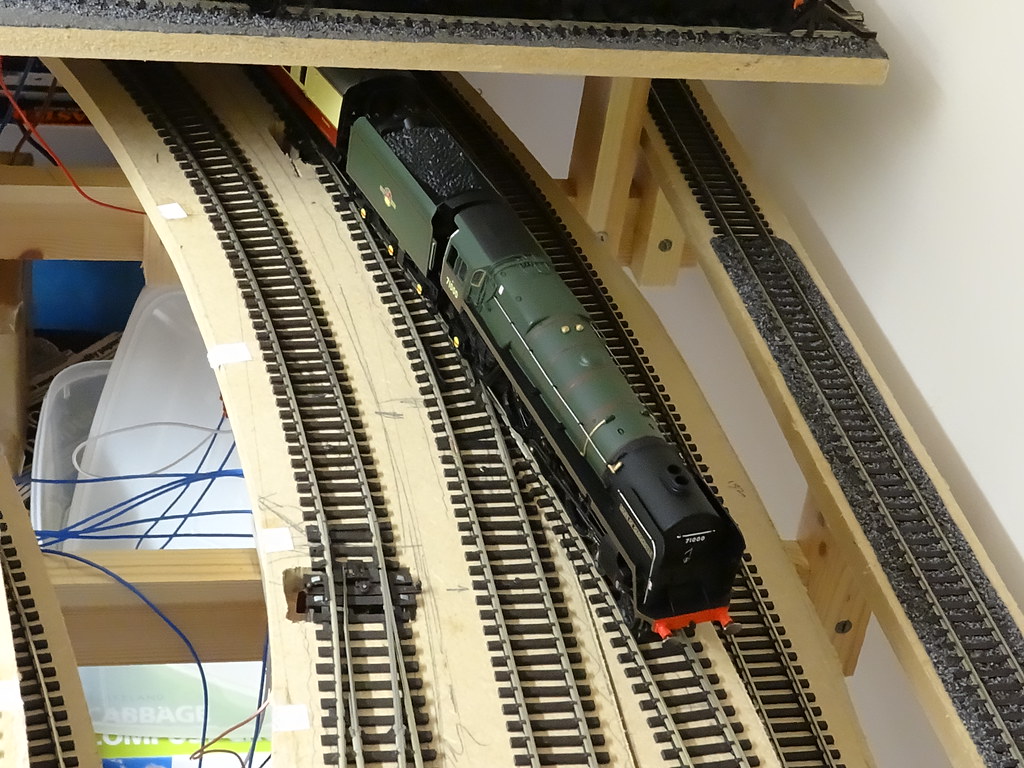
Location E – leaving the ‘round and round’ to start the descent to the low level Reversing Loop
After passing under the Branch Junction there are the two connections to the Reversing Loop, one down and one back up.

Location F –the low level Reversing Loop passing beneath the ‘round and round, note the Connecting Line at the extreme right ’
Trains travelling down from the ‘round and round’ on the low level reversing loop always travel in the same direction and hence the descent can be made relatively steeply, enabling the descending tack to pass beneath the ‘round and round’ (continuous run).

Location G –emerging from the low level reversing loop
The climb back up from the reversing loop is the most severe on the layout. As well as being on a 3ft radius curve there is the added complication that the track has to pass beneath the Connecting Line from the Main Junction up to the Branch Junction (the ex LNWR line) visible at Location F above. In theory the line would be 1 in 60 but I think the reality is that it is nearer 1 in 56.

Location H –rejoining the ‘round and round’ from the reversing loop
After exiting the Reversing Loop trains pass back under the Branch Junction and emerge again at the Main Junction.
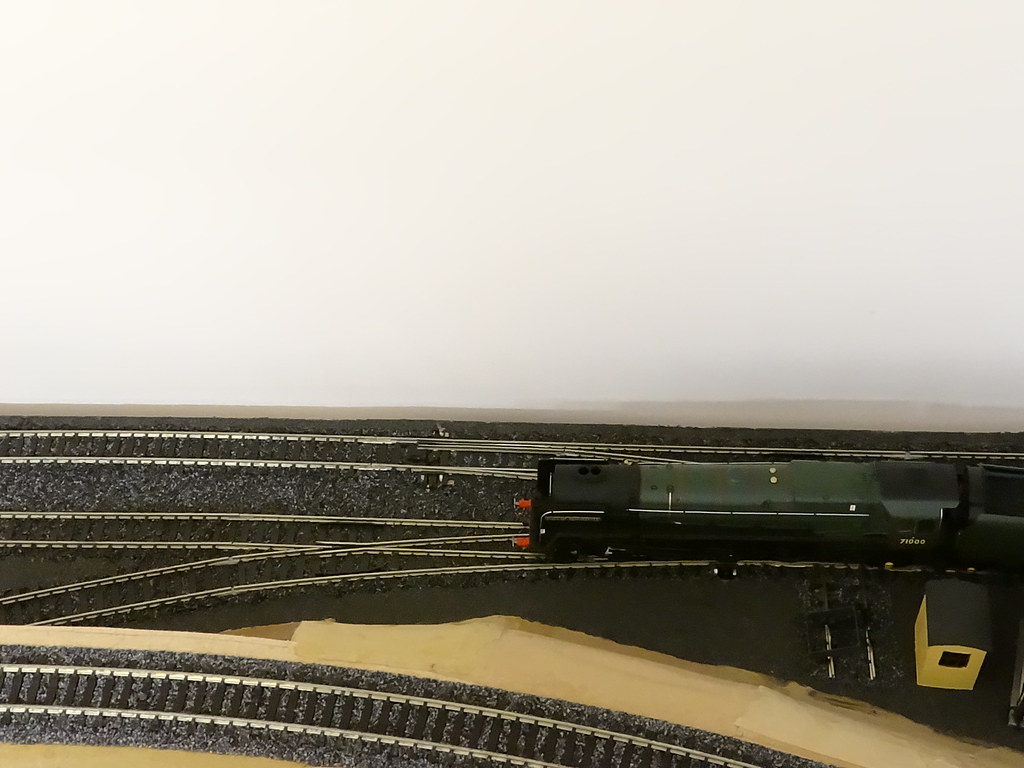
Location I –exiting the ‘round and round’
The turnout from the continuous run back down to the double track Main Line is hidden visually from the front of the layout by a signal box. The location close to the Main Junction station was dictated by the requirement to use 3ft radius curves.
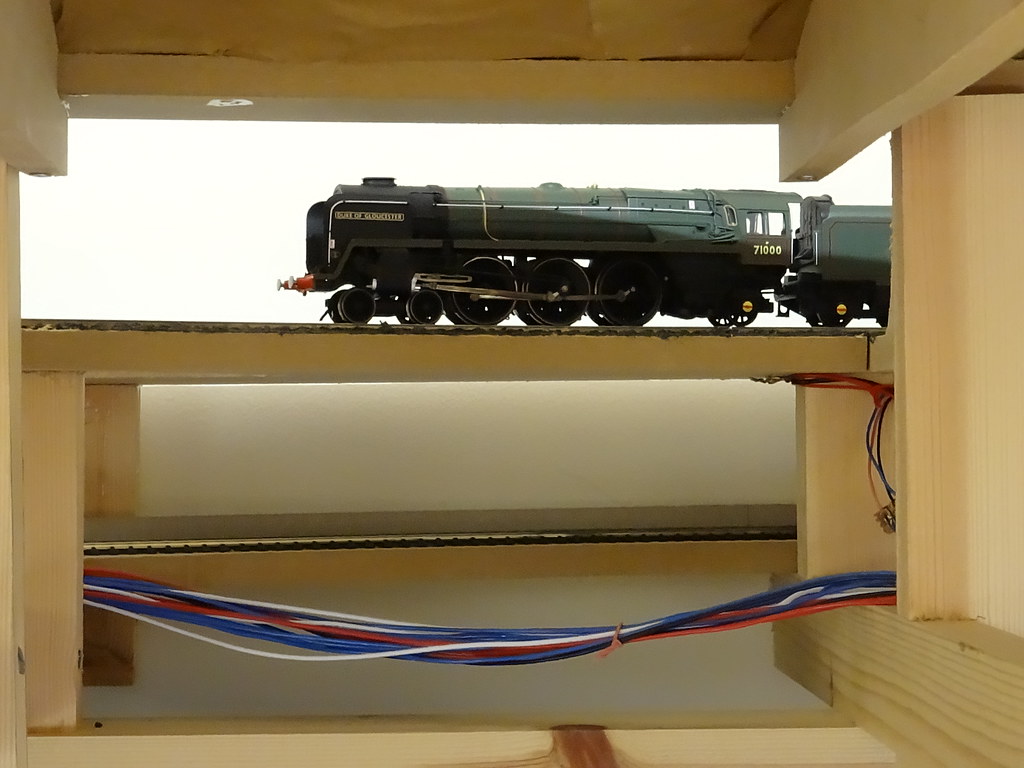
Location J–starting the descent to the low level double track Main Line – note the low level reversing loop at the bottom of the picture

Location K –back to the low level
Finally a view of the ‘down’ line with a train emerging from beneath the Main Junction on the double track Main Line.
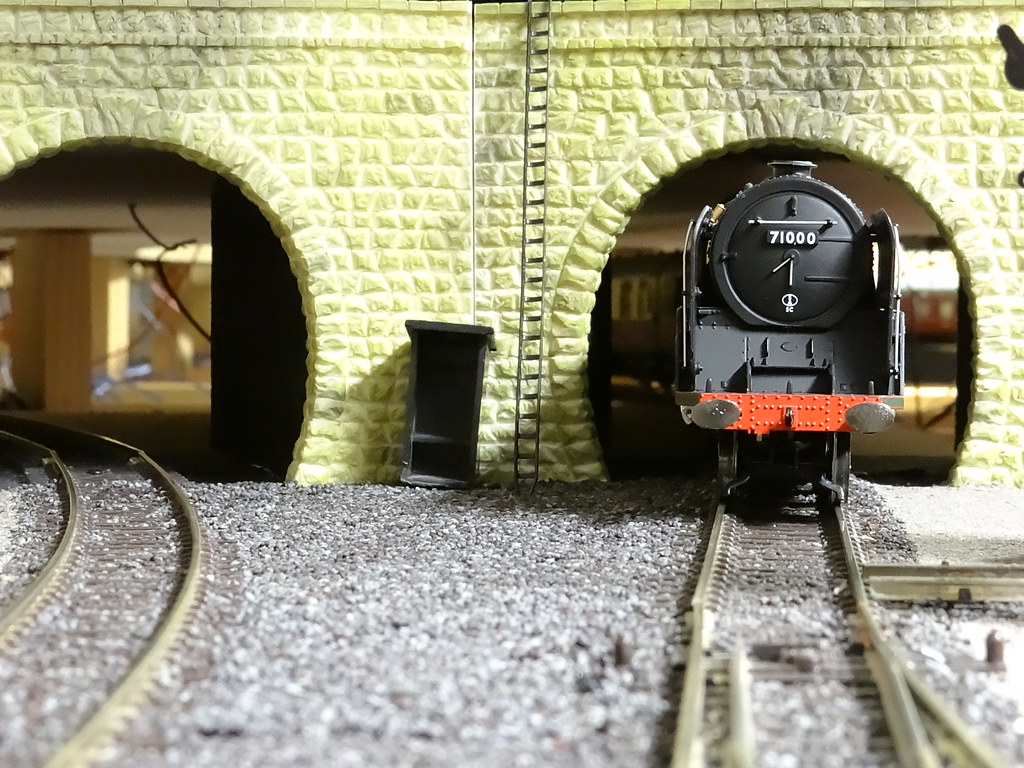
Location L –returning home
Close up pictures are really quite unnerving. After viewing the above picture I had to inspect the rail joint at the toe of the point on the left. Visually all appears satisfactory although looking at the picture I suspect that the gauge has spread at the toe of the Peco large radius point.
After the pictures there is
-
 6
6


.thumb.jpg.60c53fcbcaa34017b05b8919d1a9e6d2.jpg)

11 Comments
Recommended Comments
Create an account or sign in to comment
You need to be a member in order to leave a comment
Create an account
Sign up for a new account in our community. It's easy!
Register a new accountSign in
Already have an account? Sign in here.
Sign In Now